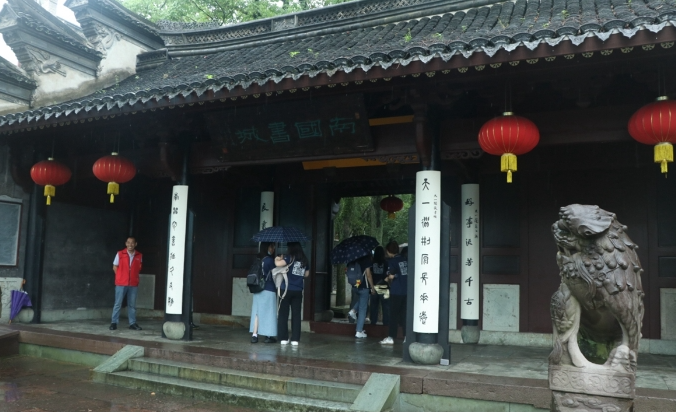Hidden in the heart of Ningbo, a historic city of learning and culture in East China’s Zhejiang Province, lies Tianyige Library. With a history spanning over 450 years, this library is the oldest in China, the oldest in Asia, and one of the three oldest private libraries in the world.
A Legacy of Learning
Founded by Fan Qin, a court official of the Ming Dynasty (1386-1644), Tianyige houses nearly 300,000 ancient books. Alongside Italy’s Malatestiana Library and the Biblioteca Medicea Laurenziana, it ranks as one of the world’s three oldest family-owned libraries. This historical treasure attracts numerous tourists with its unique architectural design, invaluable collections of ancient texts, and innovative anti-moisture techniques.
Innovative Preservation Techniques
Ningbo’s climate poses significant challenges to preserving ancient books. Hot, humid summers and cold, rainy winters make wooden structures and paper vulnerable to mold and insects. Particularly during the rainy season in June, the region experiences high moisture and temperatures, putting the library’s collections at risk.
To combat these challenges, Tianyige employs various innovative measures. The library’s two-tier structure stores books on the well-ventilated second floor to prevent dampness and flooding. The bases of the bookcases are elevated, with quartz stones placed within to absorb moisture. Anti-moth herbal sachets are strategically positioned inside the bookcases. Additionally, descendants of the Fan family use the “book-basking” method, airing books before the peak summer heat to prevent mold.
Modern technology plays a crucial role in preserving these ancient texts. The library utilizes air conditioning, ventilation systems, and an all-weather temperature and moisture control device to maintain optimal conditions. “The temperature in our storerooms is kept between 18C and 20C, with moisture levels maintained between 45 percent and 50 percent. Under these conditions, our ancient books are virtually unaffected by the rainy season,” said Li Yaoyao, head of the Culture and Tourism Development Department of the Tianyige Library.
Advanced Restoration Techniques
Tianyige’s commitment to preservation extends beyond precautionary measures. The library boasts advanced techniques for restoring damaged ancient books, a legacy that dates back to the Ming and Qing dynasties. Restoration at Tianyige involves a meticulous 28-step process, including damage investigation, page removal, cleaning, and repair.
Historically, damaged books were repaired using a special paste made from Sichuan pepper, lime, and common rue, effectively repelling moths. Today, the library’s professional team of restorers, led by a national intangible cultural heritage skills inheritor, continues this tradition. Severely damaged books may require an entire day to repair just one page. Restorers begin by finding “matching paper” that aligns with the original in material, color, and texture. The damaged paper is then flattened, and the matching paper is cut to size and attached using a special paste.
A Testament to Resilience
Despite the challenges, Tianyige Library has successfully preserved its nearly 300,000 ancient books by continually refining its moisture-proofing, insect-repelling, and restoration techniques. The library’s resilience and dedication to preserving its collection make it a remarkable destination for those interested in history, culture, and the art of book preservation.
As the oldest private library in Asia, Tianyige stands as a testament to the enduring power of knowledge and the importance of preserving cultural heritage for future generations.

